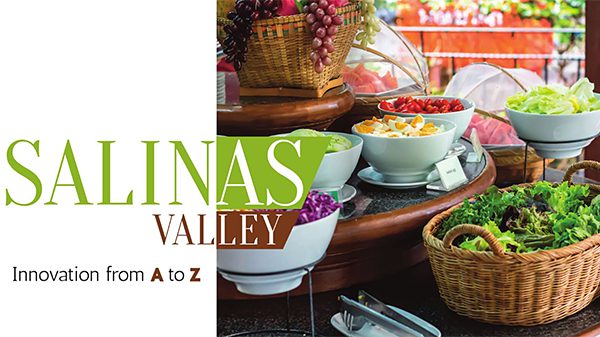Dennis Donohue, a former mayor of Salinas has been quoted as saying, “The Salinas Valley loves techies. The marriage of science and agriculture allows us to increase yields, minimize expenses, and lengthen the period when food will stay fresh.”

While the Salinas Valley has embraced technology, the nature of the crops dictates there still be a heavy reliance on the human touch.
“Mechanical harvesting remains elusive for most of the crops grown here,” said Norm Groot, executive director of the Monterey County Farm Bureau.
“Farmers still need about 45,000 fieldworkers on harvest crews each year. There’s some adoption of irrigation management technologies (automated systems for determining when irrigation is necessary and most readily accepted by the crop), soil moisture sensors, and climate monitoring equipment.
“There has also been more adaptation into field equipment management systems (including time and attendance applications),” said Groot.
Of course, he continues, opportunities for improved distribution and packaging technologies will always exist. Fortunately, “there are multiple startups in the Salinas Valley Innovation Center working on these kinds of technologies, along with other ag-centric technologies such as mechanized harvesting.”
Some technologies developed in the Valley have been genius in their simplicity. For example, a few years ago Tanimura and Antle developed a method to plant lettuce by unspooling tape into which seeds and fertilizer were imbedded, using a tenth of the labor to transplant seedlings but at a rate four times faster than workers could accomplish the task.
Jeff Hyosaka, sales manager at Pacific international Marketing, said, “We’ve seen some automated thinning options and automated transplanting equipment—the more hands you can keep out the better.” He finds the use of drones is promising as well.
“There are enhanced efficiencies and reduced costs with automation, but it will never supplant the need for human hands and eyes,” Hyosaka said. “We’re always looking for methods to gain advantage to keep costs down and in turn keep prices more attractive to consumers.”
Joe Kaslin, vice president of sales and marketing for Bengard Ranch, said he appreciates the instant communication technology affords in the field, to those driving tractors or applying fertilizer, as well as to workers and automation in the warehouse. “In terms of shipping, technology has enhanced our ability to be more efficient by consolidating product, so instead of three or four pickups, we’ll have one or two.
“This saves time for the drivers who have limitations on how much time they can be on the road,” he said. “And in the end, it benefits customers, because it speeds up deliveries to the East Coast for fresher product with longer shelf life.”
This is an excerpt from the most recent Produce Blueprints quarterly journal. Click here to read the full version.


